Landscaper Fort Worth
Landscaper in Fort Worth
So you've got a design or at least some idea of what you want your yard to look like—now somebody's actually gotta make it happen, right? That's us. We handle the complete installation from start to finish. We're not just sitting in an office drawing pretty pictures—our crews are out there every single day dealing with Fort Worth's nightmare clay soil, planting trees when it's 103 degrees, building patios that won't crack and shift when the ground decides to move around. We've done work all over—older homes in Ryan Place getting total makeovers, brand new houses out in Veale Station that are basically just dirt when we show up, even commercial stuff near Alliance that needs to look professional and handle people walking all over it.
Here's the thing about installation—this is where everything either works out great or completely falls apart. You can have the most beautiful design anybody's ever seen, but if somebody installs it wrong? Plants too deep, hardscape with a garbage base under it, irrigation that misses half the yard? You're gonna have problems within like six months. Our guys know what they're doing. They've worked in every neighborhood from downtown all the way out to the western suburbs, dealt with every weird soil situation Fort Worth can throw at us, and we've installed thousands of landscapes that are still doing great years later because we did it right the first time.
Here's what we handle:
Landscape Installation
Lawn Installation
Tree Planting
Shrub Installation
Mulching Services
Landscape Maintenance
Seasonal Cleanup
Irrigation Installation
Whether you need everything done—complete landscape top to bottom—or just want some new sod laid down, need trees planted so they actually survive and don't just die in two years, or you're looking for somebody to keep everything maintained so it doesn't turn into a jungle—we do all of it. Fort Worth's tough on landscapes. You need crews who've been doing this here for years and understand what works and what doesn't in our climate.
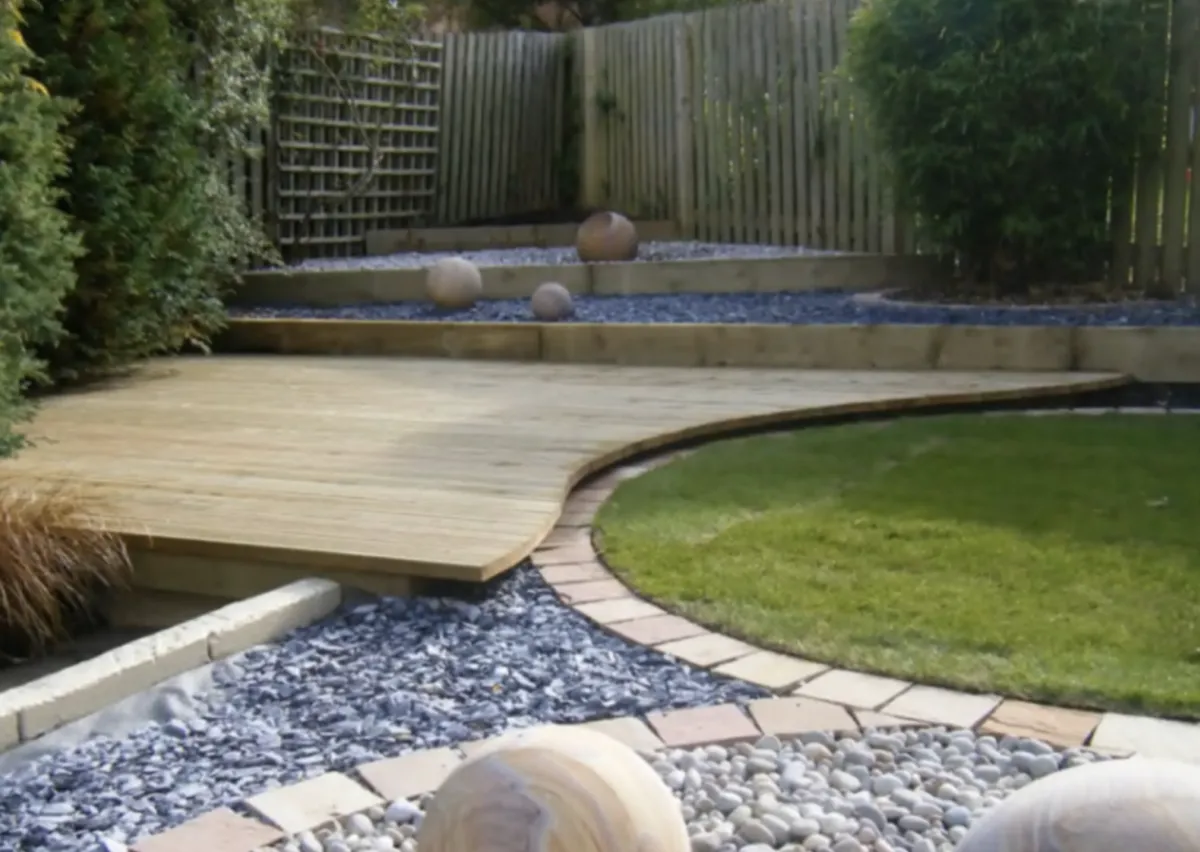
Complete landscape installation is taking whatever's on paper—the design, the plan, whatever—and turning it into an actual yard. Plants in the ground, patio built, sprinklers running, lights working. We handle every part of it so you're not trying to coordinate like five different contractors and hoping they all show up when they're supposed to.
We start with site prep—clearing out whatever old stuff was there if needed, rough grading so water doesn't pool in weird spots, marking where all the utility lines are underground so we don't hit something expensive. Fort Worth properties usually need a fair amount of prep work because our clay soil gets compacted real easy, whatever grade the builder left you with doesn't always drain right, and old landscapes leave all kinds of junk and roots you gotta deal with.
Hardscape goes in first on most jobs—patios, walkways, retaining walls get built before we start planting stuff. Makes sense, right? We're not gonna tear up your nice new flower beds dragging pavers and equipment through. The base prep is huge in Fort Worth because our clay moves around. If you don't do the base right, you're looking at settling and cracks within a year. We dig down to proper depth, put in the right base material, compact it correctly, use edge restraints—basically build it so it's gonna last even when the ground's doing its thing.
Paver patios and flagstone get installed differently—different base depths, some use sand, some use mortar, the joints are different. We've probably installed hundreds of patios around Fort Worth at this point and we know what works for our weather and what's gonna cause problems. Like up in Monticello where there's all those big old trees, we gotta work real carefully around the roots—can't just go hacking through them but we still need to build something that functions.
Retaining walls, especially the taller ones, need actual engineering—proper footing underneath, drainage behind the wall so pressure doesn't build up. We've built retaining systems all over Fort Worth. Everything from little two-foot walls just managing a slight slope to major terracing on properties near Lake Worth that have serious elevation going on.
Irrigation goes in after the hardscape's done—trenching the lines, putting in valves and sprinkler heads, running all the wire back to the controller. We set up zones that actually make sense—based on where the sun hits, what the plants need, spacing the heads so you get good coverage without overspray hitting your house and windows. And quality parts matter. Cheap sprinkler heads break constantly, bad valves give you problems, equipment in dumb locations makes everything harder to maintain.
Planting is where knowing Fort Worth really matters. Our clay soil needs to be amended, how deep you plant something affects whether it lives or dies, how you handle the root ball when it comes out of the pot determines if it's gonna establish right. We dig holes wider than they are deep—that's important in clay—mix in compost and expanded shale with the backfill, get the plant at the right depth. Not too deep, that kills trees slowly. Stake them only if we really need to, like if it's super windy or the tree's top-heavy.
Sod installation for instant lawn requires decent soil prep underneath—grading it right, adding topsoil where you need it, laying the sod pieces tight with no gaps. St. Augustine is what most people use here—handles our heat pretty well, establishes okay if you water it right. We usually do sod spring through fall, skip winter because it just sits there and doesn't do anything.
Mulch goes down in all the beds at the end—good hardwood or cedar mulch, two to three inches deep. Helps with weeds, keeps moisture in. But not too much—we see people piling it up like crazy and that causes problems. Plants can't breathe, everything stays too wet, stuff starts rotting.
Lighting gets installed as part of everything else—burying wire while we're doing construction, putting fixtures where they'll look good and actually light what you need lit, hooking up transformers. We use LED fixtures now, position them at the right angles, make sure all the connections are protected and waterproof, test everything before we call it done.
Final grading and cleanup is the last step—making sure water drains right everywhere, getting rid of construction mess, final edging on the beds so everything looks crisp. We actually clean up completely and haul stuff away. Your property looks finished, not like a construction site that got abandoned halfway through.
We give you instructions for taking care of everything after we're done—how much to water while stuff's getting established, seasonal maintenance you'll need to do, how to work your irrigation controller, what to do if something seems off. And we check back during that establishment period to make sure plants are doing okay and fix anything that's installation-related.
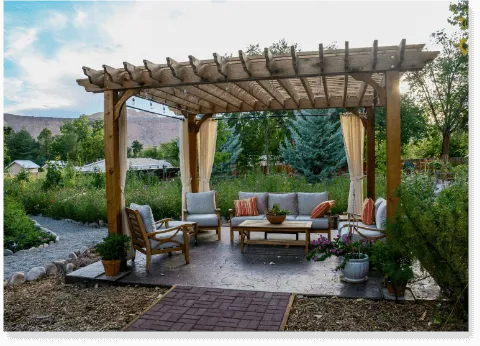
Lawn installation is basically giving you instant grass—new sod that makes your yard green right away—or hydroseeding if you've got a bigger area and you're watching the budget. St. Augustine is what pretty much everybody uses around here because it handles the heat, does okay in shade, and doesn't require insane amounts of maintenance.
Sod gives you instant results—they roll out the grass, you've got a usable lawn within a few weeks once the roots grab into the soil underneath. We get quality St. Augustine from local growers—fresh cut, not sitting around getting stressed, delivered and installed quick. Sod that sits too long before it goes down? That stuff struggles or just dies. Timing really matters.
Site prep is what determines if your lawn's gonna make it or not. Proper grading so water drains away from your house, enough topsoil depth for roots, getting rid of old grass and junk. Fort Worth clay usually needs some topsoil added—at least four inches for the grass to be happy. We grade everything carefully making sure water's moving away from your foundation and not pooling in low spots. Over in older neighborhoods like Mistletoe Heights, sometimes the whole grade needs adjusting because there's drainage issues that've been there forever.
We prep the soil by tilling what's there—breaks up compaction, works in any amendments, creates a surface where the sod can actually make contact. Clay benefits from a little amendment—we're not completely changing the soil but we improve that top few inches where the roots are gonna start growing.
Laying the sod is pretty straightforward but you gotta do it right—pieces tight together with no gaps, stagger the joints like you're laying bricks, trim edges clean along the beds and sidewalks. We roll it or tamp it down so it's making good contact with the soil—air pockets underneath cause dead spots because roots can't grow into them.
Watering right after we install and then throughout the establishment period is what makes or breaks the whole thing. New sod needs consistent water until those roots punch down into the soil underneath. We give you detailed watering schedules—usually daily at first, then we back off gradually as it establishes. Fort Worth heat makes this challenging. If you install in summer, you're watering a lot and paying close attention.
Hydroseeding is the budget option for bigger areas—it's basically a sprayed slurry of seed, mulch, and fertilizer that covers the soil. Takes longer than sod—few weeks before the grass really fills in—and you gotta keep watering consistently and be patient. Works great for larger properties, slopes where you need erosion control, or if you're budget-conscious and can wait for results.
Timing makes a difference—spring and fall are perfect for St. Augustine. Summer works but you're watering like crazy during establishment. We don't do winter installs because the grass just goes dormant and nothing happens until spring anyway. Why wait months for results?
Different St. Augustine varieties perform differently too. Palmetto does better in shade, Raleigh handles cold better, newer ones like Captiva have finer texture. We recommend based on how much sun you've got, what you're using the lawn for, how much maintenance you wanna do.
We usually install edging at the same time—metal or plastic stuff separating your beds from the grass—creates clean lines and keeps the grass from creeping into your flower beds. Proper depth, staked down good, smooth curves that match your bed shapes.
After installation you gotta maintain it right—first mowing once the grass gets tall enough, keeping it at the right height for St. Augustine, never scalping it by cutting too much off at once. We give you all the guidance—how often to mow, adjusting watering as the lawn gets established, when to fertilize based on Fort Worth growing seasons.
Sometimes we're replacing a failing lawn—tearing out old grass that's dying, figuring out why it failed in the first place, putting down fresh sod. We figure out what went wrong—bad drainage, terrible soil underneath, too much shade—and fix the problem before we install the new grass so you're not just repeating the same failure.
Tree planting is a long-term investment—shade, structure, your property value, all kinds of environmental benefits that develop over years. Fort Worth trees like live oak, cedar elm, bur oak, crape myrtle, Texas ash—these handle our conditions and perform reliably if you plant them right and take care of them during establishment.
Where you put the tree determines everything. You need enough space for the mature size, the right conditions for whatever species you're planting, and you gotta avoid hitting utilities underground or planting too close to structures. Biggest mistake people make is planting way too close to stuff. Trees outgrow the space, roots get into foundations, branches hit the house. We look at sites carefully—think about how big it's gonna be in 20 years, where the roots are gonna spread, what's overhead—and we position trees where they'll actually work long-term.
Picking the right species matters. You need shade? Fast grower or slow? How big is the space? What do you want it to look like in fall? How much maintenance are you willing to do? Live oaks are amazing but they need serious room. Cedar elms handle tough sites and our clay pretty well. Red oaks give you that stunning fall color. Over in established areas like Rivercrest where there's already mature trees everywhere, we're usually filling in gaps where old trees died or adding smaller understory trees for interest.
Size at planting is a balance—bigger trees look substantial right away but they establish slower, smaller trees establish faster but take forever to get big. We usually go somewhere in the middle—big enough that it makes an impact but small enough that it establishes within a reasonable timeframe.
How you actually plant it affects the tree's entire life. Hole size, depth, what you do with the backfill, how you handle the root ball—all of it matters big time. We dig holes two or three times wider than the root ball but not any deeper than the root ball's height. Wide holes encourage roots spreading out in our clay. Planting too deep is one of the worst things you can do—slowly kills trees over years. The crown's gotta sit right at grade or even slightly above.
Root ball prep depends on what kind of container it came in. Burlapped trees need the wire basket and burlap removed or at least loosened up. Container trees are often root-bound and you gotta loosen up that root system or they'll just keep growing in a circle and never establish. We score circling roots, get them pointed outward, prevent girdling roots that choke the tree later.
Backfill in Fort Worth clay gets a little amendment—we're not completely changing the soil but we improve it slightly to help initial establishment. The native soil's gotta stay the main component though. If you create this perfect soil in the hole, the tree just grows in that "container" of good soil and never extends roots into the surrounding clay.
Staking only when we have to—windy exposed sites, top-heavy trees, unstable root balls. Most trees don't need it and over-staking is actually a problem—prevents the trunk from strengthening, damages bark if the ties are too tight, makes the tree dependent on the stake. When we do stake, we use flexible ties, attach low on the trunk, and take it off within a year.
Mulch around new trees—two to four inches deep, pulled back from the trunk—keeps moisture in, moderates temperature, keeps weeds and grass away. Never pile it up against the trunk like a volcano. That causes rot and invites pests.
Watering during establishment is critical. Deep, thorough watering that encourages deep root growth. How often depends on the season and weather. Fort Worth heat really stresses new trees—you gotta water consistently that first growing season or they die. We give specific schedules based on when you planted and how big the tree is.
Fall planting is ideal—roots establish over winter before they have to deal with summer. Spring works too but then the tree's facing summer stress before it's fully established. We try to avoid summer planting if we can—the heat makes establishment really tough.
Pruning at planting is minimal now—just remove damaged branches. Old advice used to say cut it back heavily but that's been proven wrong. Trees need their foliage to produce energy for growing roots. We prune as little as possible and let the tree focus on getting established.
Shrub installation creates the structure in your landscape—foundation plantings around your house, big masses of plants in beds, hedges, specimen features—giving you year-round presence and seasonal interest. Fort Worth shrubs that work well—Texas sage, yaupon holly, possumhaw, dwarf yaupon, wax myrtle—handle our conditions if you install them properly and take care of them while they're getting established.
Site prep for shrub beds is more extensive than tree planting because shrubs root in that top two feet of soil. We amend the beds pretty heavily—work in compost, expanded shale, aged mulch throughout the planting area. Improves drainage and adds organic content. Way better growing medium than straight clay.
Layout considers how big things are gonna get. Spacing that allows them to grow to mature size without crowding each other, different heights layered for depth, grouping plants instead of scattering singles everywhere. Huge mistake is planting too close. Looks amazing at installation but three years later it's an overgrown mess. We space based on mature spreads—might look a little sparse when we're done but it fills in the right way.
Plant selection depends on what you've got—sun or shade, reflected heat off walls, wind, drainage. Foundation plantings get cooked by heat reflecting off your house—you need tough heat-tolerant stuff. Shrubs under tree canopies need shade tolerance. Yaupon holly works great in shade, most blooming shrubs need more sun or they won't flower.
Container shrubs get planted similarly to trees—holes wider than the containers, right depth, backfill with amended native soil. We rough up root balls if they're pot-bound—get those roots spreading out instead of continuing to grow in circles. Pot-bound shrubs never establish right if you don't deal with the roots.
Grouping by water needs makes everything easier. Drought-tolerant natives together, separate from stuff that likes more moisture. You create zones you can manage differently. Fort Worth landscapes that mix water needs all over the place? Those create watering problems and maintenance headaches.
Mulching the beds—two to three inches deep, pulled back from the stems—stops weeds, keeps moisture in, moderates temperature swings. We use good hardwood or cedar mulch. Avoid the dyed stuff, don't go too deep, don't pile it against the plant stems.
Spacing from the house matters too. Leave enough room for growth, avoid foundation damage, keep moisture away from your house, maintain access so you can still do home maintenance. We plant far enough back that mature growth won't require constant pruning or crowd everything.
Mass plantings create way more impact than singles scattered around. Multiple plants of the same thing grouped together makes a much stronger statement. Three to five matching shrubs grouped strategically looks cohesive. Over in formal landscapes like you see in Westover Hills, we use repeated masses to create rhythm and unity throughout the design.
Hedge plantings need consistent spacing based on how dense you want it and how fast you want it to fill in. Closer spacing for immediate screening, wider spacing if you can wait and want a more natural look. We calculate spacing based on mature spread and your timeline.
Watering during establishment—deep, thorough watering to settle soil and encourage root growth. Frequency depends on season and weather. Fort Worth summers stress new shrubs hard—you gotta water consistently that first season or they're not gonna make it. We give specific guidance based on what we planted and when we planted it.
Fall installation is ideal because they establish before facing summer stress. Spring works with proper watering through summer. Summer installation is possible but challenging—requires extra attention to make sure they survive establishment.
Initial pruning is minimal—just damaged branches. Let them establish without additional stress. Formative pruning starts after the first growing season once they're established and growing good.
Mulching is one of those things that seems simple but actually makes a huge difference in how your landscape performs. Good mulch conserves moisture—suppresses weeds—moderates soil temperature—breaks down over time adding organic matter to our clay soil. We handle mulching for new landscapes and annual refreshing for established properties throughout Fort Worth.
Quality mulch matters tremendously. We use natural hardwood mulch or cedar—not dyed stuff—proper texture that doesn't mat down or wash away easily. Cheap mulch from questionable sources sometimes contains weed seeds, breaks down too fast, or looks terrible after one rain. We source quality products that actually perform and look good.
Proper depth is critical—two to three inches is ideal for most applications. Too little doesn't suppress weeds or retain moisture effectively. Too much causes problems—plants suffocate, moisture stays excessive, encourages fungal issues and pest problems. We see mulch volcanoes piled against trees all over Fort Worth—that's killing trees slowly. We pull mulch back from trunks and plant stems creating proper clearance.
Bed preparation before mulching involves edging beds cleanly—removing old decomposed mulch if it's built up excessively—addressing weed issues before covering with fresh mulch. We don't just pile new mulch on top of whatever's there year after year. Eventually you've got six inches of old mulch creating drainage problems and burying plants. We remove excess buildup and start fresh.
Color choices affect aesthetics—natural hardwood mulch browns ranging from light tan to dark brown, cedar's reddish tones, different looks for different preferences. We help clients select colors complementing their home and landscape style. Over in traditional neighborhoods like Monticello, natural browns tend to fit better. More contemporary landscapes might use darker mulches for contrast.
Mulch types serve different purposes. Hardwood mulch is versatile—works most places—moderate breakdown rate. Cedar resists insects naturally—lasts slightly longer—costs more. Pine bark nuggets work for slopes where erosion is concern—larger pieces don't wash as easily. Shredded hardwood stays put better than nuggets on flat areas.
Application timing typically happens spring and fall—refreshing mulch for growing season and preparing beds for winter. Spring mulching helps with moisture retention heading into summer heat. Fall application insulates soil heading into winter. We mulch year-round as projects dictate but those are optimal timing for refresh applications.
Coverage rates depend on mulch type and desired depth—calculating proper quantities avoiding excess waste or running short mid-job. We estimate accurately based on bed square footage and application depth ensuring adequate material arrives.
Landscape fabric underneath mulch is controversial—some people swear by it, others hate it. We typically don't recommend it for beds because it prevents organic matter incorporation into soil and eventually becomes a maintenance nightmare as it surfaces and shreds. In specific applications like under rock mulch it makes more sense. We discuss options honestly based on your situation.
Seasonal refreshing keeps landscapes looking maintained—annual or biannual mulch addition as previous layer decomposes. Fort Worth heat and humidity break down organic mulch relatively quickly. Most beds benefit from fresh mulch annually maintaining proper depth and appearance.
Mulching around trees extends beyond drip line ideally—creating mulched area protecting roots from mower damage and grass competition. We mulch appropriately sized rings around trees—never piled against trunks—encouraging healthy root development and protecting valuable trees.
Commercial mulching handles larger properties—business parks, apartment complexes, HOA common areas—requiring efficient application and proper scheduling minimizing disruption. We've mulched commercial properties all over Fort Worth—coordinating timing around business operations, working efficiently, managing disposal and cleanup professionally.a
Landscape maintenance keeps your outdoor space looking good and performing well year-round—mowing, pruning, fertilizing, irrigation management, seasonal adjustments. We handle ongoing maintenance for clients who want professional care or prefer not spending weekends doing yard work.
Mowing service for lawns maintains proper height—frequency based on growth rates varying seasonally. St. Augustine performs best maintained at three to four inches—higher height encourages deeper roots and better heat tolerance. We mow regularly during growing season—weekly spring through fall typically—less frequently during winter dormancy. Sharp blades, proper patterns preventing ruts, edging along beds and hardscape creating clean appearance.
Shrub pruning maintains shape—controls size—encourages healthy growth—removes dead or damaged material. Timing matters—spring flowering shrubs prune after bloom, summer bloomers prune in late winter, evergreens prune as needed maintaining form. We prune appropriately for plant type and desired aesthetic—formal sheared hedges versus natural informal shapes. Over in manicured neighborhoods like Westover Hills, more formal pruning maintains refined appearance. Casual landscapes in other areas might need minimal pruning maintaining natural forms.
Seasonal fertilization provides nutrients supporting healthy growth—timing based on Fort Worth growing seasons. We fertilize lawns spring and fall primarily—avoid summer fertilization stressing grass during heat. Shrubs and perennials get fertilized early spring encouraging growth, possibly again fall depending on plant types. Trees typically need minimal fertilization once established unless soil testing indicates deficiencies.
Irrigation management adjusts watering schedules seasonally—more water during summer heat, reduced watering during cooler months, turning systems off during rainy periods. We monitor irrigation system performance—checking for broken heads, coverage gaps, controller malfunctions—repairing issues maintaining efficient water delivery. Fort Worth water bills get expensive—efficient irrigation management saves money while keeping landscapes healthy.
Weed control addresses unwanted vegetation in beds and lawns—hand pulling, targeted herbicide application when necessary, maintaining dense healthy plantings that naturally suppress weeds. We use pre-emergent herbicides strategically—preventing weed seeds from germinating—reducing weed pressure throughout growing season.
Mulch refreshing annually or biannually maintains proper depth—appearance—weed suppression—moisture retention. We add mulch as previous layers decompose maintaining two to three inch depth throughout beds.
Pest and disease monitoring identifies problems early—treating issues before they become severe—using appropriate products and methods. Fort Worth landscapes deal with specific challenges—spider mites during hot dry periods, powdery mildew in humid conditions, various insect pests affecting different plants. We identify problems accurately and treat effectively.
Seasonal color rotation for clients wanting fresh flowers—installing annuals spring and fall—removing spent plants—refreshing containers and color beds. Spring color includes petunias, snapdragons, pansies transitioning to heat-tolerant summer options like zinnias, pentas, lantana.
Leaf removal and debris cleanup particularly fall and winter—keeping beds and lawns clear—preventing smothering turf—maintaining neat appearance. Fort Worth's deciduous trees drop leaves primarily November through January—regular removal prevents matted layers killing grass underneath.
Irrigation winterization if needed—blowing out lines in areas expecting hard freezes—protecting equipment. Fort Worth typically doesn't require full winterization like northern climates but occasional hard freezes warrant precautions. We drain backflow preventers and protect exposed equipment during freeze warnings.
Dethatching and lawn aeration addresses compacted soil and thatch buildup—improving water and nutrient penetration—encouraging healthy root growth. Our clay soil compacts easily—aeration helps tremendously improving lawn performance. We typically aerate lawns annually—spring or fall—using core aerators removing soil plugs.
Maintenance contracts provide scheduled service—regular visits maintaining landscapes consistently—priority scheduling for additional services—managing all aspects of landscape care. We offer flexible arrangements—full-service maintenance handling everything, mow-and-go service for basics, customized plans addressing specific needs and budgets.
Seasonal cleanup happens primarily spring and fall—preparing landscapes for growing season or winter—clearing debris, cutting back perennials, refreshing mulch, addressing accumulated maintenance needs. These intensive cleanups supplement regular maintenance ensuring landscapes transition seasons properly.
Spring cleanup prepares landscapes for growing season—removing winter debris, cutting back dead perennial growth, refreshing mulch, pruning dormant plants before growth begins. We clean out accumulated leaves and branches from winter storms, edge beds cleanly, prepare irrigation systems for regular use, fertilize lawns and plantings encouraging spring growth.
Fall cleanup prepares landscapes for winter—removing fallen leaves, cutting back spent perennials, final mowing before dormancy, protecting sensitive plants, winterizing irrigation if needed. Fort Worth falls are generally mild but cleanup prevents matted leaves smothering lawns and prepares everything for occasional winter freezes.
Perennial cutback timing depends on plant type—some perennials cut back fall after frost kills foliage, others leave standing through winter for interest and wildlife value then cut back early spring before new growth emerges. We cut back appropriately based on plant varieties and landscape style preferences.
Ornamental grass cutting happens late winter before new growth starts—cutting back previous year's growth allowing fresh new foliage emerging. We cut grasses to six to twelve inches typically—timing carefully so we're not cutting into new spring growth. Over near the Botanic Garden area where ornamental grasses are popular, we do a lot of late winter grass cutting.
Debris removal hauls away cuttings, leaves, branches—disposing properly rather than leaving piles in your yard. We load everything and haul it away—your property looks clean, not like we just pushed mess into corners hoping you wouldn't notice.
Bed edging redefines bed lines—creating crisp separation between beds and lawn—maintaining defined landscape areas. Edges blur over time as grass encroaches and soil shifts. We re-edge beds during seasonal cleanup maintaining clean lines and proper boundaries.
Mulch refreshing during cleanup adds new layer—covering decomposed mulch—restoring proper depth and fresh appearance. Spring cleanup often includes mulch addition preparing beds for growing season—fall cleanup might add mulch providing winter insulation.
Irrigation system checks ensure everything's working properly entering growing season or shutting down for winter. Spring cleanup includes turning on systems—checking all zones—repairing winter damage—adjusting settings for coming season. Fall cleanup might include system shutdown procedures if hard freezes expected.
Pruning during cleanup addresses dormant season pruning needs—removing dead wood, shaping plants before growth starts, thinning overgrown shrubs. We prune appropriately for plant types and timing—avoiding pruning spring bloomers before they flower, handling summer bloomers during dormancy.
Fertilization often accompanies spring cleanup—applying lawn fertilizer encouraging green-up, fertilizing beds supporting spring growth, addressing nutrient needs before plants start actively growing. Fall fertilization sometimes happens during fall cleanup helping plants storing energy for winter and early spring root growth.
Gutter cleaning often gets requested during fall cleanup—removing leaves and debris from gutters preventing clogs and water damage. While not strictly landscaping, it makes sense addressing during seasonal cleanup when we're already removing leaves and working at height with ladders and equipment available.
Seasonal cleanup pricing typically charges by property size and condition—neglected landscapes requiring more work cost more than well-maintained properties needing basic seasonal refresh. We provide quotes based on actual scope—not surprising people with unexpected costs after work's done.
One-time cleanup service addresses properties needing attention without ongoing maintenance commitment—new homeowners inheriting neglected landscapes, rental properties between tenants, spring cleanup for people handling their own maintenance but wanting professional seasonal overhaul. We handle one-time cleanups regularly throughout Fort Worth.
Irrigation installation creates efficient watering systems—proper coverage, water conservation, automated scheduling—maintaining landscapes through Fort Worth summers without constant manual watering. Professional irrigation design and installation makes difference between landscapes thriving and struggling during our hot dry periods.
System design starts with zone planning—grouping plants by water needs and sun exposure, calculating coverage requirements, positioning heads for efficient water delivery without overspray. We map zones carefully—full sun turf areas separate from shade plantings, native drought-tolerant beds on different zones from moisture-loving plants. Hydrozoning saves water and improves plant health by delivering appropriate moisture to each area.
Coverage calculations ensure adequate water delivery—head spacing, precipitation rates, overlap patterns providing uniform coverage. Gaps in coverage mean dry spots and stressed plants. Excessive overlap wastes water and creates overwatered areas. We design systems with proper head spacing and pressure management delivering uniform coverage efficiently.
Sprinkler head selection depends on application—rotor heads for larger turf areas providing greater throw distance, spray heads for smaller areas and planting beds offering precise coverage, drip irrigation for foundation plantings and efficient water delivery to specific plants. We use quality components—Rainbird, Hunter, Toro—professional grade equipment performing reliably.
Valve placement and sizing affects system performance—proper valve location for access and protection, adequate sizing for zone demands, quality valves providing reliable operation. We install valves in accessible valve boxes—not buried impossibly deep or hidden where nobody can find them—making future service and adjustments manageable.
Controller selection and programming determines system automation—modern smart controllers with weather sensing adjusting watering based on actual conditions, Wi-Fi connectivity allowing remote management, seasonal adjustment capability adapting to changing needs. We install user-friendly controllers and program them appropriately for Fort Worth conditions—more water during establishment, seasonal adjustments reducing watering in cooler months.
Pipe sizing and layout affects water delivery—adequate pipe diameter maintaining pressure throughout system, logical layout minimizing pipe runs and fittings, proper trenching depth protecting lines from damage. We trench carefully avoiding existing utilities and tree roots where possible, size pipes appropriately for zone demands, create systems delivering consistent pressure to all heads.
Backflow prevention is required by Fort Worth code—preventing irrigation water from contaminating potable water supply. We install required backflow prevention devices—atmospheric vacuum breakers or pressure vacuum breakers depending on system design—ensuring code compliance and water supply protection.
Drip irrigation for beds and foundation plantings provides efficient targeted watering—delivering water directly to root zones, reducing waste from overspray and evaporation, keeping foliage dry reducing disease pressure. We design drip systems with proper emitter spacing—appropriate flow rates for plant types—pressure regulators ensuring consistent delivery.
Rain sensors and moisture sensors integrate with controllers—preventing watering during rain, monitoring soil moisture adjusting schedules based on actual needs rather than fixed timing. These devices conserve water and prevent overwatering improving system efficiency and reducing waste.
Installation timing coordinates with landscape installation—trenching and installing irrigation before final grading and planting makes sense for new landscapes. Retrofit irrigation installations work around existing plantings carefully—minimizing disruption, repairing any inadvertent damage, integrating new system with established landscape.
System testing verifies proper operation—checking all zones for coverage, adjusting heads for optimal spray patterns, programming controller correctly, educating clients on system operation. We test thoroughly before finalizing installation ensuring everything works correctly and client understands operation and seasonal adjustments.
Permit requirements in Fort Worth mandate permits for irrigation installation—we pull required permits, ensure code compliance, coordinate inspections. Permitting protects homeowners ensuring professional installation meeting local standards.
Winterization and seasonal service prepares systems for occasional Fort Worth freezes—draining backflow preventers, blowing out lines if hard freeze expected, adjusting controller settings seasonally. While Fort Worth typically doesn't require full winterization, precautions during freeze warnings protect equipment from damage.
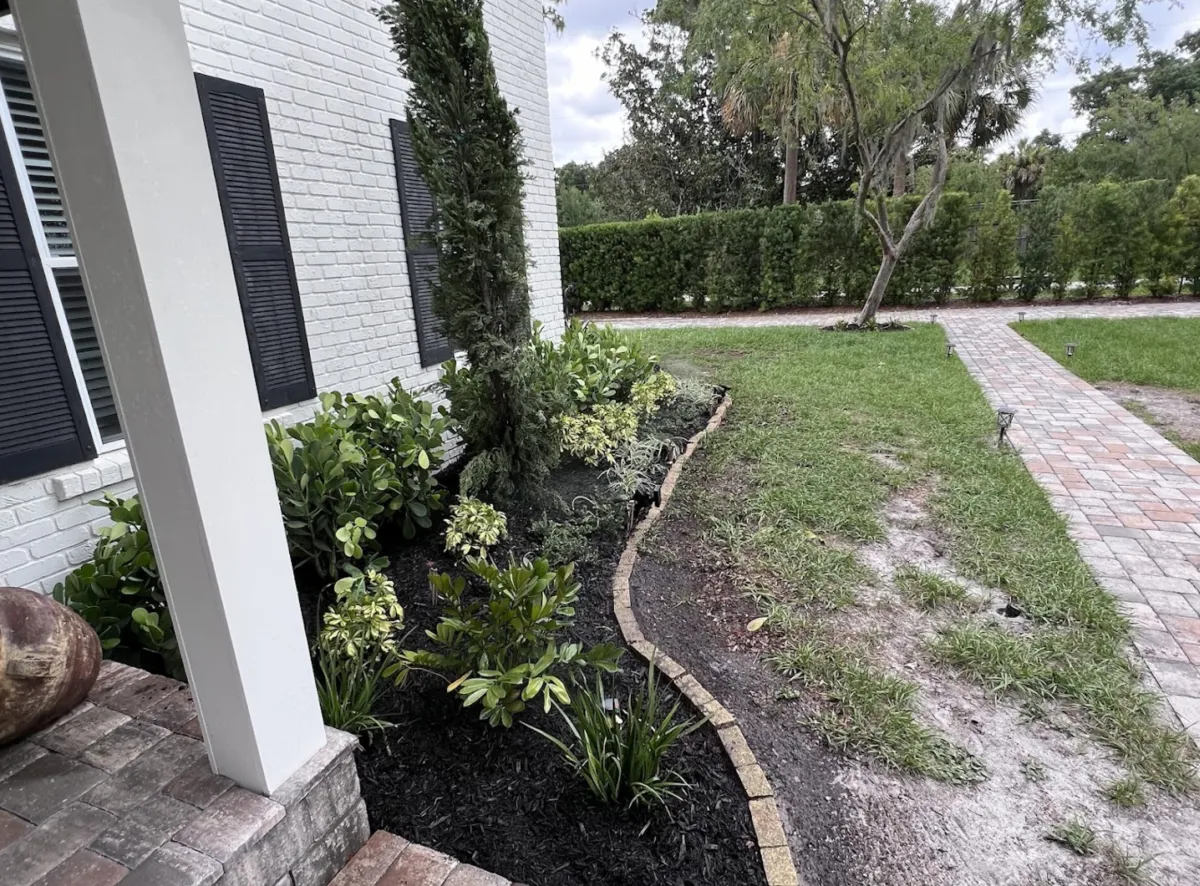

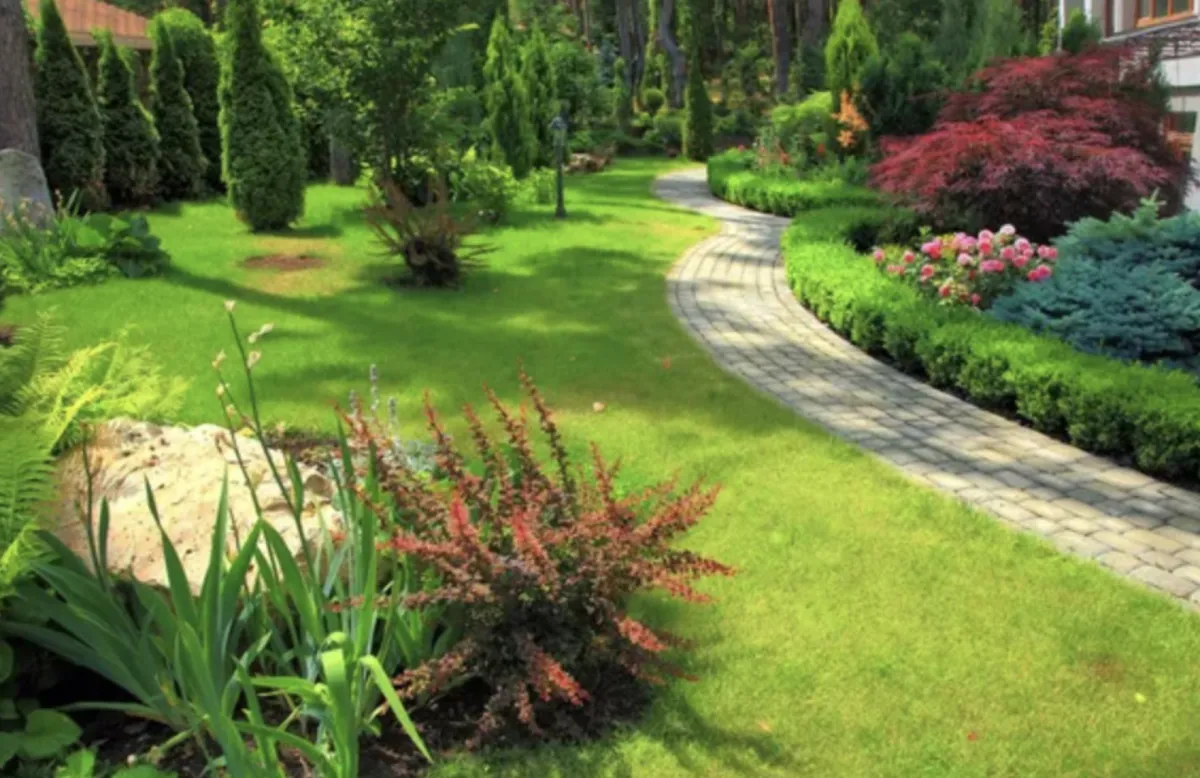
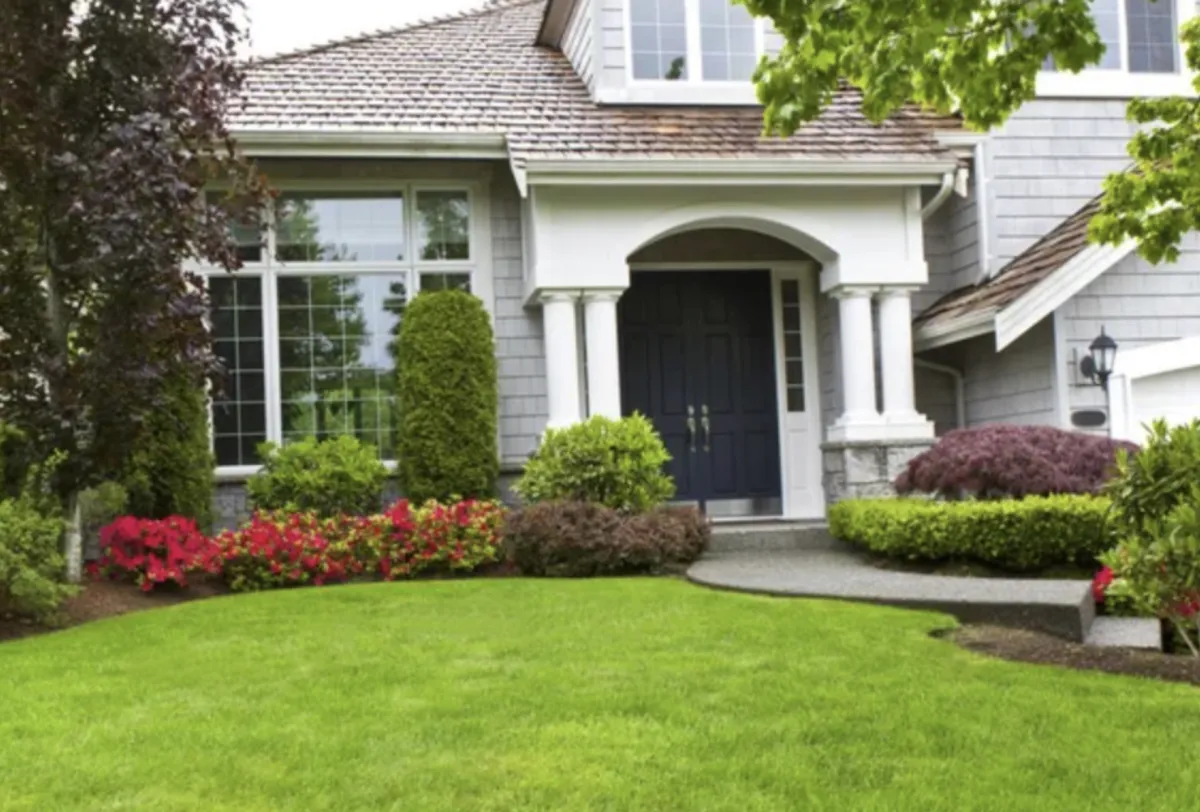
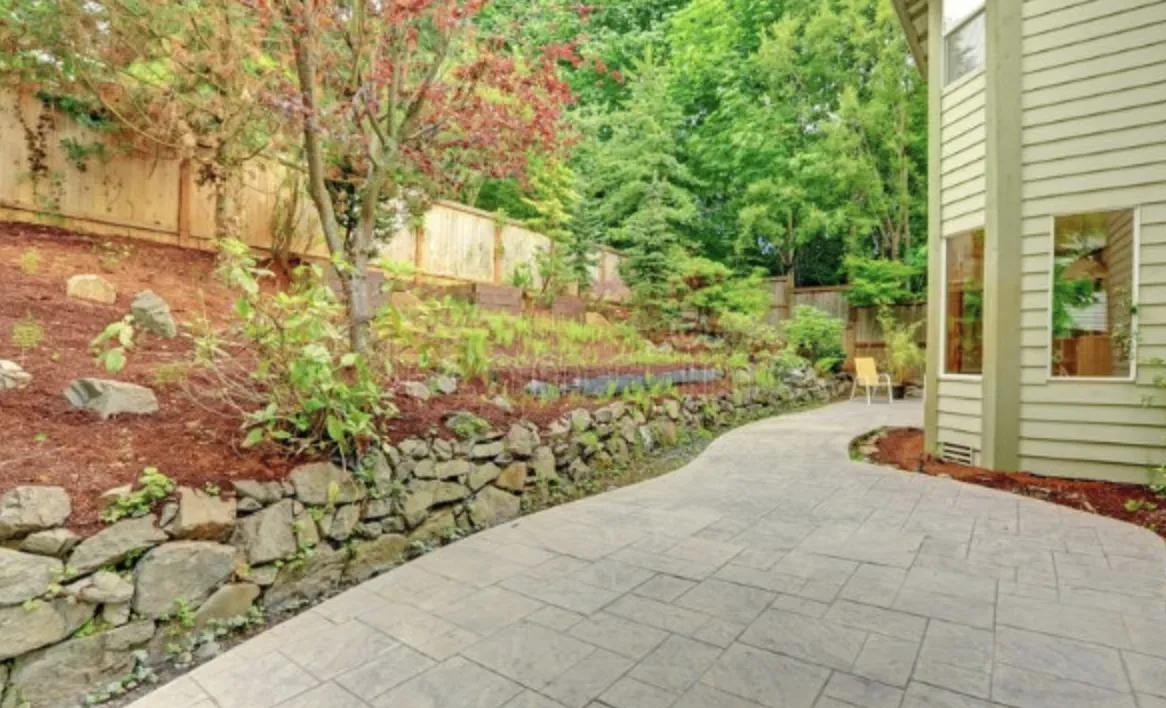

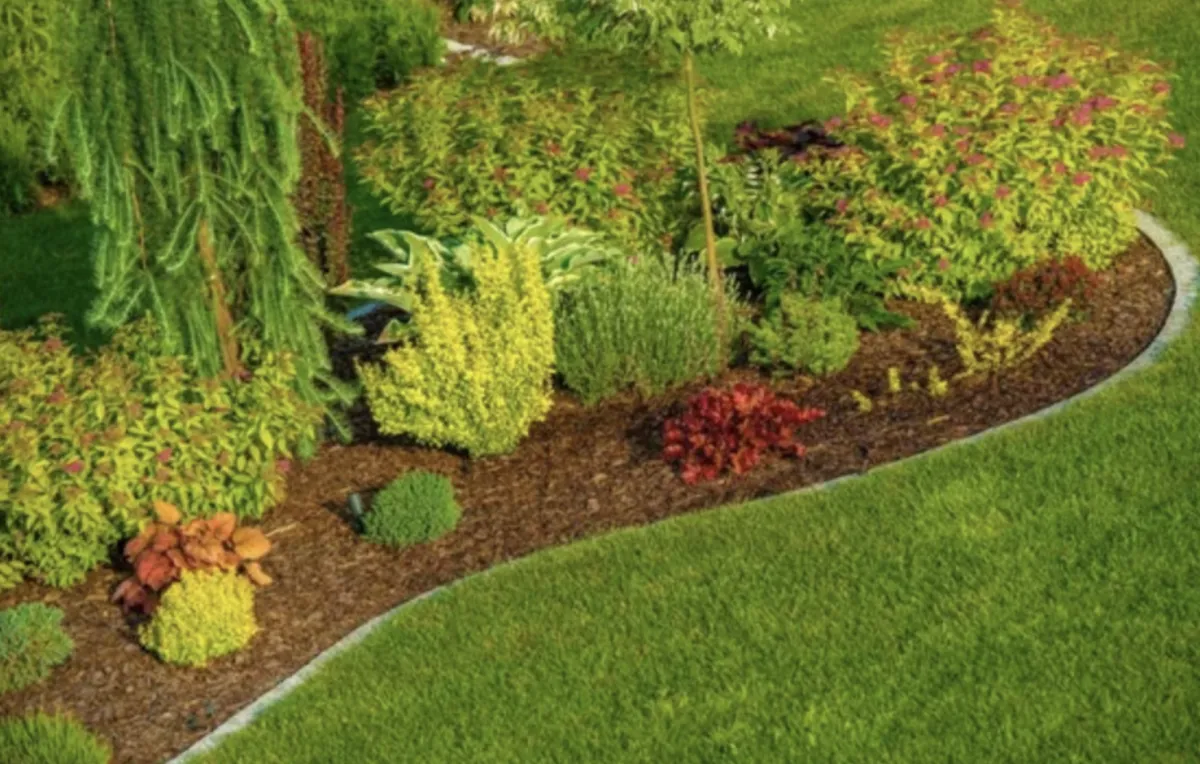

See What Our Customer Say About Us
Sarah M., Fort Worth, TX

“I can’t say enough good things about HF Landscape Design Fort Worth. They totally transformed our backyard into something out of a magazine — and they did it on time and within our budget. The team showed up early every day, cleaned up after themselves, and really listened to what we wanted. You can tell they actually care about the little details, not just getting the job done. Our neighbors keep stopping by asking who did the work — we tell everyone to call HF Landscape Design. Best decision we made for our home!”
Daniel R., Fort Worth, TX

“HF Landscape Design Fort Worth really blew us away. We had a plain front yard before, and now it looks like something you’d see in a design show. They helped pick the right plants for the Texas heat and even added lighting that makes the place glow at night. Super easy to talk to and very professional — they made the whole thing stress-free. We’d hire them again in a heartbeat.”
Megan & Tyler H., Fort Worth, TX

“Our backyard was just dirt and weeds before HF Landscape Design came in. Now it’s the spot where we spend every weekend with friends. They built a patio, added flower beds, and somehow made it all feel natural like it was always meant to be there. You can tell they love what they do — every detail was perfect. Highly recommend them to anyone in Fort Worth wanting a yard they’ll actually use.”
Start Your Landscaping Project
Stop looking at bare ground, failing plantings, or landscapes that never lived up to expectations. Get professional landscaping installation that accounts for Fort Worth's clay soil and climate conditions.
Call (817) 580-3329 to schedule a landscaping consultation. We'll discuss your project, provide accurate cost estimates, and deliver installation that performs as intended.
Service Areas: Fort Worth, Tanglewood, Ridglea Hills, River Crest, Westover Hills, Berkeley, Monticello, Mistletoe Heights, and surrounding communities.
Frequently Asked Questions
What is the average cost of landscape design?
Landscape design costs in Fort Worth typically range from $2,000 to $8,000 depending on property size—project complexity—level of detail required. Simple front yard designs for smaller properties might run $1,500 to $3,000. Comprehensive landscape plans for larger properties with detailed planting plans—hardscape designs—irrigation layouts—lighting plans usually cost $5,000 to $10,000 or more. We typically credit design fees toward installation if you proceed with us for the work. Design-only services cost more since we're not recouping fees through installation. Most clients in areas like Tanglewood or Westover Hills invest in detailed designs because their properties warrant professional planning. Newer neighborhoods with simpler yards might need less extensive design work.
What does it cost for a landscape design?
Design fees depend on project scope and what you need included. Basic conceptual designs showing general layout—plant groupings—hardscape locations run $1,500 to $3,000 for typical residential properties. Detailed construction-level plans with exact plant specifications—hardscape dimensions—grading plans—irrigation zone maps cost $4,000 to $8,000 or higher for complex projects. Commercial landscape design involves additional complexity and typically costs more. We discuss your specific needs during initial consultation and provide design fee quotes based on actual scope. Design fees get credited toward installation when you hire us for the work. Fort Worth properties with challenging conditions—significant slopes—drainage issues—often need more detailed planning which affects design costs.
What is the difference between a landscape architect and a landscape designer?
Landscape architects have formal education—state licensing—ability to stamp engineering drawings for permits. They handle complex projects requiring grading engineering—structural calculations—commercial site development—regulatory compliance. Landscape designers focus on plant selection—aesthetic layout—residential design without engineering components. In Fort Worth, landscape architects are required for certain commercial projects—retaining walls over specific heights—projects needing engineered drainage solutions. Residential projects usually work fine with landscape designers unless you've got significant slope issues—major grading needs—structures requiring engineering stamps. Landscape architects cost more but bring technical expertise for complex projects. Most residential landscapes in neighborhoods like Arlington Heights or Ridglea work well with landscape designers. Larger estates or properties with serious site challenges benefit from landscape architectural services.
Why is landscape design so expensive?
Professional landscape design involves considerable time—expertise—detailed planning work. Designers spend hours on site assessment—measuring—analyzing drainage and sun patterns—researching plant options for specific conditions. Creating scaled plans requires CAD software skills—design knowledge—understanding of Fort Worth's climate and soil conditions. Good designers prevent expensive installation mistakes—plant failures—drainage problems that cost far more to fix later. You're paying for years of experience knowing what works in North Texas clay soil—which plants survive July heat—how to design irrigation zones efficiently. Design fees also cover revisions—client meetings—coordination with contractors during installation. Cheap or free designs often mean cookie-cutter plans—inexperienced designers—or design costs hidden in inflated installation prices. Professional design upfront saves money long-term by getting things right the first time.
What is the rule of 3 in landscaping?
The rule of three suggests planting in odd-numbered groups—typically three plants—creates more natural and visually appealing arrangements than even numbers. Three plants or features create triangular compositions—visual interest—balance without formal symmetry. This applies to groupings of the same plant variety or repeating design elements throughout the landscape. In Fort Worth landscapes, you might see three crape myrtles anchoring a bed—three groupings of ornamental grasses—three boulders in a natural arrangement. The rule helps avoid the static look of paired plantings or single specimens. Works for plants of various sizes—repetition of colors—hardscape feature placement. Not a strict requirement but a helpful design principle creating more dynamic landscapes. We use the rule of three alongside other design principles—proper spacing—mature size consideration—Fort Worth-appropriate plant selection.
What is a realistic landscaping budget?
Realistic budgets for Fort Worth landscape projects typically start around $10,000 for basic front yard renovations and run $20,000 to $50,000 for complete front and backyard transformations with hardscaping. Simple refreshes—new plants—mulch—irrigation repairs might cost $5,000 to $8,000. Projects including patios—retaining walls—outdoor kitchens—extensive plantings easily reach $50,000 to $100,000 or more. Budget depends on property size—existing conditions—how much hardscape you want—plant material quality and maturity. Fort Worth's clay soil often requires additional drainage work affecting costs. Established neighborhoods like Monticello with mature landscapes might need less work than new construction in Walsh Ranch starting from dirt. Quality materials and experienced installation cost more upfront but last longer and perform better in our climate.
